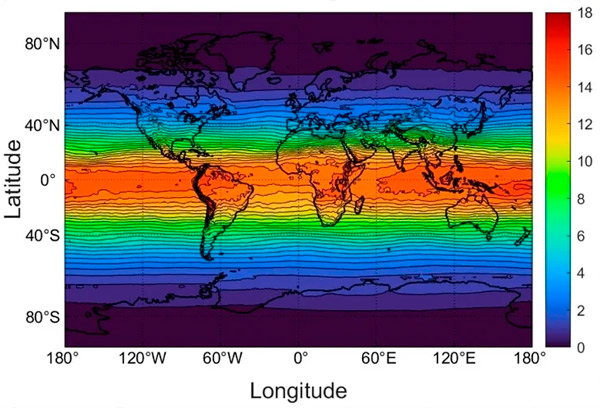New publications
Personalized vitamin D recommendations based on latitude and skin type can help combat deficiency
Last reviewed: 02.07.2025

All iLive content is medically reviewed or fact checked to ensure as much factual accuracy as possible.
We have strict sourcing guidelines and only link to reputable media sites, academic research institutions and, whenever possible, medically peer reviewed studies. Note that the numbers in parentheses ([1], [2], etc.) are clickable links to these studies.
If you feel that any of our content is inaccurate, out-of-date, or otherwise questionable, please select it and press Ctrl + Enter.

In a recent study published in the journal Nutrients, researchers calculated the approximate amount of sunlight exposure needed to maintain vitamin D levels based on latitude, month, and skin type, given clear and cloudy sky conditions for an active person wearing modest clothing.
The study highlights the importance of an individual approach to assessing nutritional needs. It highlights the relationship between food intake, sunlight exposure and geographic factors, which may help develop strategies to combat widespread vitamin D deficiencies across populations.
Vitamin D is vital for musculoskeletal health and has many other health benefits, but deficiency is common, partly due to inadequate dietary sources and limited exposure to sunlight. Public health strategies often include food fortification or supplements, but the challenge is balancing vitamin D synthesis with the risks of excessive sunlight exposure.

Average clear-air midday UVR values for March 2004–2020. Although UVR is primarily a function of latitude, it is also affected by ozone levels (lower in the Southern Hemisphere, especially at high latitudes) and altitude (most notably in western South America, where the Andes are located). Study: Global assessment of UVB exposure times for maintaining adequate vitamin D levels.
The study aims to provide accurate recommendations, taking into account factors such as latitude, skin type and time of year, to inform national policies on food fortification, supplements and sunlight exposure. It thus addresses the complexity of maintaining optimal vitamin D levels while minimising health risks.
The researchers used global ultraviolet (UV) radiation data from the Global Ozone Monitoring Experiment (GOME). This data was initially presented as the UV index (UVI) and later converted to UV radiation effective for vitamin D synthesis.
The data were obtained from instruments attached to European Space Agency (ESA) satellites and provided continuous coverage from 2002 to the present via the TEMIS portal. The study focused on UVI data for clear sky and all sky conditions, including cloud data where possible, to determine UV levels.
To estimate changes in vitamin D levels, calculations from a previous study were used that related UV exposure in terms of standard dose vitamin D (SDD) to changes in circulating 25-hydroxyvitamin D (25OHD) levels.
The analysis revealed different exposure times needed to maintain vitamin D levels under clear and cloudy skies.
Under clear skies, exposure times for white-skinned individuals ranged from 3 to 15 minutes for every 10 degrees of latitude, with longer times at higher latitudes due to lower sun angles and Antarctic ozone depletion.
People with skin type V required longer exposure times at all latitudes compared to skin types I–IV, while people with skin type VI experienced even longer exposure times, especially at higher latitudes.
Under cloudy skies, the impact of cloudiness varied with latitude and seasons, increasing exposure time by approximately 15% in equatorial regions and up to an additional 60% at high latitudes.
Despite this, vitamin D maintenance remained achievable for white-skinned individuals even at high latitudes outside the vitamin D winter. However, for individuals with skin type VI, exposure times exceeding 15 minutes in equatorial regions and more than an hour at high latitudes were required under all sky conditions.
The study results highlight the importance of balancing oral intake and cutaneous synthesis of vitamin D, particularly through sunlight exposure, to effectively address deficiency. They also provide valuable insights into the potential for maintaining vitamin D levels through sunlight exposure, given variations in latitude and skin type.
Maintaining vitamin D status becomes challenging in winter due to decreased sunlight availability, particularly at higher latitudes. This highlights the need for alternative strategies, such as increased sun exposure in summer or dietary supplementation. Changes in lifestyle and working conditions may affect vitamin D synthesis, particularly for individuals with deeply pigmented skin at higher latitudes.
Strengths of the study include its comprehensive approach, providing recommendations for sun exposure times for different skin types and latitudes. However, limitations are acknowledged, such as assumptions about the area of skin exposed and the lack of consideration of cultural practices.
Future research could examine additional factors influencing vitamin D synthesis, such as age and ethnicity, and refine recommendations on timing of exposure based on a better understanding of individual needs and behavior. Overall, the study findings provide valuable insights to guide public health strategies to combat vitamin D deficiency worldwide.
